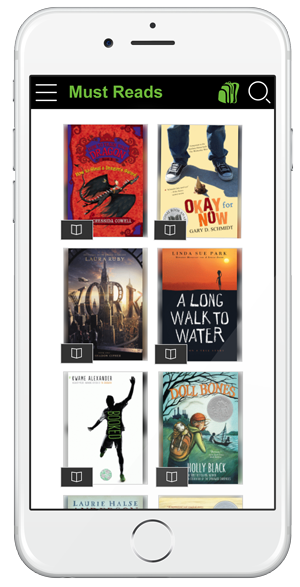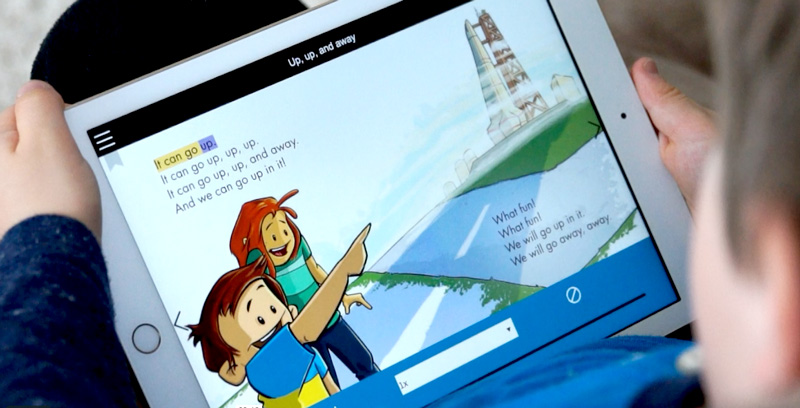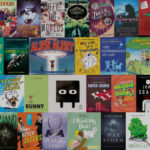by Jennifer McCarty Plucker, Ed.D., Director of Professional Learning at Mackin and Deidra Purvis, Lead Classroom Specialist at Mackin
Teachers need books, lots of books. Many teachers understand that the more students read, the better readers they become. However, what should teachers do when even their most advanced students aren’t reading assigned texts? It’s no surprise that many kids are using strategies such as online notes, skimming, and class discussions to pretend they are reading class-assigned novels. Is the whole class novel really valuable if kids aren’t reading it?
The solution is student choice. Teacher-supported independent reading plays a vital role in promoting literacy. Research clearly shows that the more students enjoy reading, the more they engage in reading; and the more students engage, the more reading growth they experience.1 Providing access to robust classroom libraries is vital in providing students with adequate choices in interest and difficulty of text. This, along with strategies such as daily book talks, time for reading, time for authentic discussions about books, and reading conferences can motivate and guide students as readers.2
What is amazing is that when teachers transition to a literacy practice that provides students with time and resources to engage in self-selected reading, the students have tools to engage in authentic conversations about books, grow in acceptance and inclusion of diversity, and become informed global citizens.3 One teacher who transitioned from teaching three core texts per semester with his students to allowing student choice for independent reading and book clubs had astounding results. At the least, his students were reading three books per semester, but with the freedom to choose and read at their own pace, most students started reading more books and more challenging books than what was originally assigned.4
 With proper use of a rich classroom library, teachers can motivate lifelong readers, help students improve reading skills, and guide students to naturally strengthen their use of reading strategies. A digital collection also plays a vital role in keeping your classroom library vibrant and diverse while also accommodating more students. Here are four more ways a digital option will further enhance your classroom library:
With proper use of a rich classroom library, teachers can motivate lifelong readers, help students improve reading skills, and guide students to naturally strengthen their use of reading strategies. A digital collection also plays a vital role in keeping your classroom library vibrant and diverse while also accommodating more students. Here are four more ways a digital option will further enhance your classroom library:
More Bang For Your Buck
The standard recommendation is it that a classroom library should contain 10-20 books for every student in the classroom.5 Some teachers recommend an even larger collection. At a minimum, this means that a classroom of 30 students requires a classroom library of 300 books. Many teachers find creative ways to expand their book-to-student ratio, such as swapping classroom library collections with other teachers throughout the school year.
However, with a digital collection, the entire collection of eBooks and other digital resources in your school library become a part of your classroom library collection. This may mean that there are hundreds of books available to teachers and students going unused. Each eBook purchased by the school can be on display on every single teacher’s digital shelf. If the book has a single-user license, one student can check the book out at a time, but still that book is available to every student in the school as an option. If the book is multi-user, an unlimited number of students can read the book at the same time.
If you don’t currently have a school collection of eBooks, this purchase could offer the biggest bang for your buck and eliminate the need for teachers to switch collections throughout the year. Also, don’t forget that eBooks will never become damaged or lost, meaning that your purchase will last a lifetime.
Added Privacy
When providing students with the option of eBooks in your classroom, you are helping to provide a safe environment. Using a digital device for reading adds a layer of privacy for your students. This means that students can choose any book to read without fear of judgment from other students. This could be helpful for students who are reading below grade level titles, students who don’t want peers to see how quickly they are advancing through a text, students who are reading a title that may be outside of gender norms, or students who are exploring topics that they may not want advertised.
Personalization and Accessibility
Digital platforms such as MackinVIA allow students to personalize their reading experience, providing comfort and accessibility to students. Students can choose the font and text size—tools which often prove helpful for students with learning disabilities, students with visual impairments, and all readers alike. Readers can also choose from various backlight and color options. Additionally, resources such as Read-Alongs provide students access to books at their interest level that may be challenging. Read-Alongs allow the student to follow along with the text while hearing professional narration. If the title is not purchased as a Read-Along, students can take advantage of the text-to-speech feature which reads text aloud to students. Students can also use the dictionary feature which allows them to read definitions of unfamiliar words directly in the book they are reading. Audiobooks are another option for students who have time to listen to books while traveling to co-curricular events, exercising, waiting for rides, or simply as another choice for accessing great titles.
Increased Value for Content Areas
Classroom libraries are also vitally important in content area classrooms. For example, different literacy skills are needed to read scientific texts, math texts, and historical texts. By providing students with high-interest science books, students have additional time to learn how text features such as charts and graphs can inform their reading. Additionally, authentic historical accounts written from diverse perspectives allow students to learn a more complete version of history than what the textbook may allow. Providing a variety of historical fiction and nonfiction books also allows students to explore historical moments from various points of view. The same can be done to explore topics in other subject areas such as music, health, and more.
Digital collections further expand resources available for inquiry in content area classrooms. Students can benefit by finding books for a unit of study that are at, below, or above reading level. Additionally, they can take advantage of accessibility tools discussed above. Teachers can add audiobooks, videos, podcasts, and online articles as resources to digital classroom library collections to frontload information before reading and to meet the learning styles of all students. Students are also often more engaged and motivated by content outside of the typical textbook.







